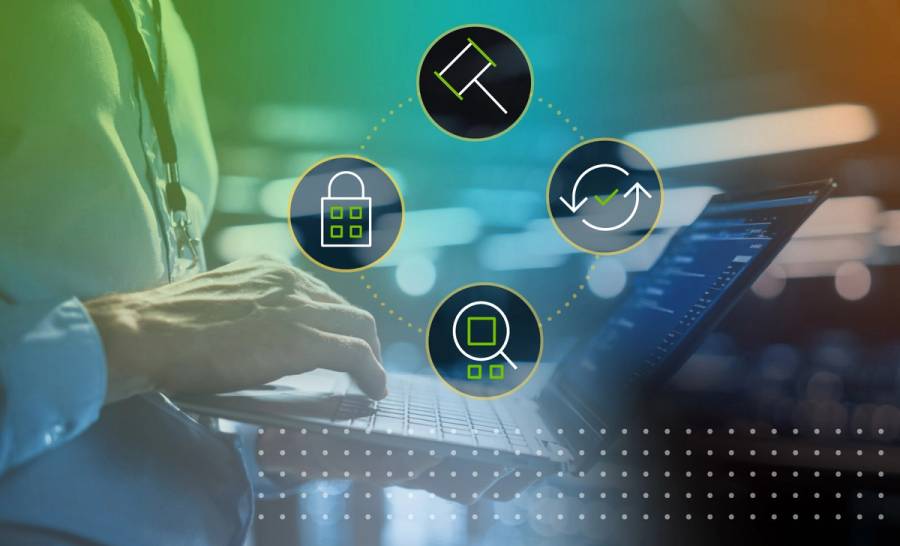What’s your data democratization strategy? How to successfully democratize data

If you’re already sold on the importance of data democratization, you’re likely wondering how to get started with your data democratization strategy. How can you ensure that the right people can access the right data, at the right time? How can you choose the right technologies and stay on-budget while meeting the needs of multiple stakeholders?
When making a culture shift this massive, you need a plan.
What is a data democratization strategy?
A data democratization strategy is a proactive plan to prepare both technical and non-technical users to access and analyze data for the betterment of the business. Most data democratization strategies contain the following elements:
- Summary of goals
- KPIs (Key performance indicators: how will we know we’ve succeeded?)
- People, processes, and technologies needed
- Timeline
- Budget
Benefits of data democratization
While the benefits of data democratization ultimately outweigh the drawbacks, it’s wise to be aware of some of the challenges associated with it before developing your strategy. Here are the key pros and cons of data democratization:
Pros
- Better communication and problem-solving throughout the organization. True data-driven decision making is only possible through data democratization.
- Faster access to accurate data. When data is organized and made accessible, people can get the information they need faster and get back to their core objectives.
- Greater time and cost savings. Data democratization saves time and money in a multitude of ways: from reducing time to market to streamlining or automating repetitive manual tasks.
Cons
- Initial investment. This is, hands down, the most frequently cited barrier to data democratization—especially among organizations lagging behind the industry leaders.
- Change management. As with any organization-wide change, there will be hurdles to overcome as you train your team on new data-related tools and processes.
- Security risks. With great power comes great responsibility. Although you can (and should) provide different levels of access for different types of users, making data more readily available also means it will be vulnerable to loss and misuse.
How do you implement data democratization?
Here are five steps for implementing data democratization at your organization. You’ll likely need to adapt these depending on your specific environment and goals, but treat this like a framework you can build out from.
- Do research. Read articles and reports by data experts ( Gartner and the Collibra Resource Library are both great places to start). Observe what your competitors are doing. Ask around your organization to get a feel for how and why your company is already using data, and identify ways in which data democratization could optimize every department or line of business.
- Secure buy-in. Whether you’re a data scientist or a CTO at a multinational corporation, you will need to convey the value of data democratization to your colleagues before you can invest in the tools and training required to put it in place. Use examples whenever possible: if you can provide a tangible demonstration of how better use of data can save the business time or money, you’ll already be lightyears ahead of your competitors.
- Create a data source map. A data source map is a visual guide that shows where your data is currently stored and how it flows around your organization. Where is data siloed? Do you have data that’s only accessible by IT? This map should also include the types of data stored in each location and who can currently access it.
- Outline a data governance plan. In your perfect data democracy, who will have access to what data? How will you adhere to GDPR or industry-specific regulations that guide the handling of data at your organization?
- Shop around for data democratization tools. Whether you need specific software to supplement your existing tech stack or you’re in need of a comprehensive data intelligence platform, there is a wide world of options out there. Ask colleagues, check technology review sites, and book demos of various data management and analytics tools to see what might be a good fit.
Best practices to establish data democratization
When you’re launching your data democratization strategy, there’s no need to engage in the costly process of trial-and-error—instead, harness the wisdom of those companies that have come before you and keep the following best practices in mind.
Get executive leadership on board.
Data democratization is, at its core, a change in values. If these values aren’t exhibited by those at the top, there’s little chance of them impacting employees throughout the organization.
Focus on data quality, not just quantity.
Make a plan for regularly cleaning up bad data. Data hygiene, the practice of clearing out stale data and ensuring your data is “clean”, is central to the success of your data democratization plan. Who will be responsible for maintaining data quality? How often will they be expected to review and remove bad data, and how much can this process be automated?
Prioritize security.
Data democratization security is a major consideration in any strategic plan, especially considering that even one data breach can have harmful short- and long-term effects on the business. Use role-based permissions to restrict data access when appropriate, and employ cybersecurity best practices like multi-factor authentication to keep data safe.
Invest in training.
“An uneducated data user is a dangerous data user,” writes Lindy Ryan of Radiant Advisors, and we couldn’t agree more. While many modern enterprise data management solutions are no-code or low-code, even the smallest shift in technology can cause major disruptions to business if employees aren’t prepared. When you’re putting together a budget for your data democratization strategy, don’t cut corners on training and education. There are cost-effective ways to give users the knowledge and hands-on training they need — from asynchronous, pre-created videos and training modules to live training sessions onsite.
Your technology providers may even offer tutorials or instructor-led training at your company headquarters, so explore your options. And data democratization training goes beyond educating your team on how to use a new tool, as well. There are basic tenets of data science that, when applied correctly, can significantly improve the quality of analysis and lead to better outcomes for the business.
Related articles

Data GovernanceApril 17, 2025
Strengthening data reliability at WGU through smarter governance

PartnerJanuary 26, 2024
Collibra is proud to be part of the Snowflake Horizon Partner Ecosystem

Data CatalogMay 22, 2023
Facing your data challenge with a data catalog

Data CatalogAugust 25, 2025
How to build a data catalog: Step-by-step
Keep up with the latest from Collibra
I would like to get updates about the latest Collibra content, events and more.
Thanks for signing up
You'll begin receiving educational materials and invitations to network with our community soon.
